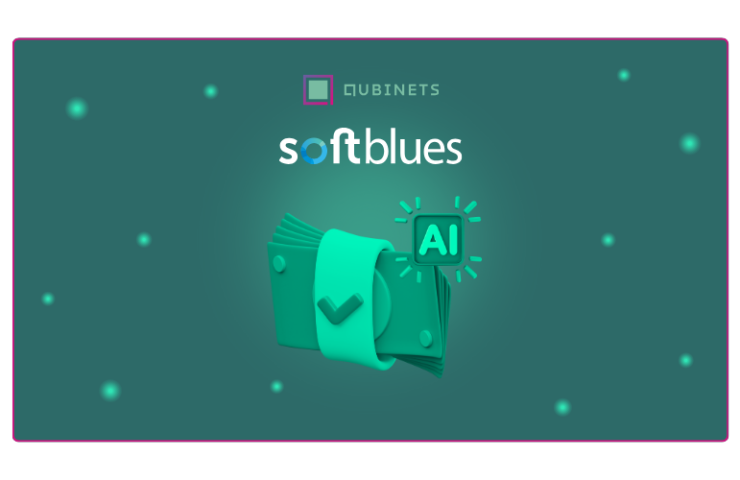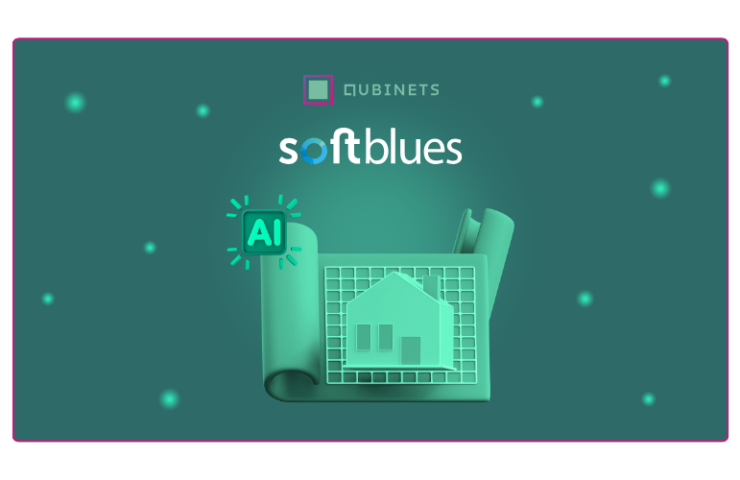E-commerce thrives on personalization. Shoppers expect smart recommendations, instant answers, and a seamless shopping journey—but delivering that level of responsiveness isn’t easy. Many online stores rely on basic keyword search and generic “frequently bought together” suggestions, which often fail to understand what the customer truly wants.
Our friends from Softblues saw an opportunity to change that. They built an AI-powered recommendation system that doesn’t just list products but understands customer needs, refines recommendations, and engages in natural conversations to guide buyers toward the right purchase.
This AI agent integrates three key modules into the shopping experience:
- Smart Product Discovery Module – Helps customers find the right product by analyzing queries in natural language.
- Product Q&A Widget – Provides detailed answers and comparisons to ensure customers feel confident in their choices.
- Smart Recommendations Widget – Suggests complementary products based on contextual insights rather than just purchase history.
Each of these components works together to enhance product discovery, reduce friction in decision-making, and boost conversions. Let’s break down how this AI-powered system works.
How the AI-Powered Recommendation System Works
It operates through three core modules, each designed to enhance the shopping experience:
Smart Product Discovery Module – AI-Powered Search That Understands Context
Traditional search relies on exact keywords and static filters, often leaving customers frustrated when they don’t find exactly what they need. The Smart Product Discovery Module changes that by interpreting natural language queries, extracting relevant attributes, and dynamically refining product recommendations.
How It Works:
A customer enters a search like:
“I need a lightweight laptop for video editing with a long battery life.”
The Recommendation Agent:
- Extracts key parameters (weight, usage type, battery life).
- Retrieves matching products from structured databases and vector search.
- Enriches results by adding specifications and highlighting why each item fits the user’s needs
The system asks smart follow-up questions to refine the search:
- Do you prefer a Mac or Windows laptop?
- What screen size do you prefer?
- Are you looking for a budget-friendly or high-end option?
The refined results are dynamically updated, guiding users to the most relevant products.
Product Q&A Widget – Answering Customer Questions in Real Time
Even after finding a product, shoppers often have follow-up questions—things they’d normally ask a store associate before making a purchase.
The Product Q&A Widget allows users to ask specific questions and receive immediate, AI-generated responses based on product specifications, store policies, and customer reviews.
How It Works?
A customer visits a product page and sees pre-generated product-specific questions, such as:
- How long does this battery last under heavy use?
- Is this moisturizer safe for sensitive skin?
- Does this jacket have waterproof lining?
If the customer has a different question, they can type it in the chat.
The Q&A Agent processes the request and retrieves real-time answers from:
- Product metadata (official descriptions, manufacturer specs).
- Store FAQs & policies (shipping, returns, warranty).
- Customer reviews & feedback (real-world user experiences).
If relevant, the Alternatives Agent suggests similar products that better match the user’s needs.
Smart Recommendations Widget – Context-Aware Product Suggestions
Traditional recommendation engines rely on simple “Frequently Bought Together” logic, which often feels random and disconnected. Softblues’ Smart Recommendations Widget takes a different approach, offering context-aware, personalized suggestions.
How It Works?
The system analyzes purchase patterns and user interactions in real time.
The Bought Together Agent identifies products frequently purchased together but prioritizes contextual relevance over generic pairings.
The Result Enrichment Agent adds meaningful context to each recommendation, explaining why the suggested product is relevant:
- “This toner is often paired with your selected moisturizer because it helps balance your skin’s pH for better absorption.”
- “80% of customers who bought this gaming laptop also added a cooling pad for better performance during long gaming sessions.”
The Context Manager ensures that recommendations align with the customer’s ongoing shopping journey rather than forcing generic cross-sells.
The Technical Backbone of the AI-Powered Recommendation System
Building an AI recommendation system that delivers real-time, context-aware suggestions requires a sophisticated backend architecture. The system is structured into several core components, each handling a critical part of the recommendation process.
ETL Pipeline – Data Processing at Scale
The system relies on an ETL (Extract, Transform, Load) pipeline to manage and process product data efficiently. The pipeline follows a structured flow:
- Raw Data Extraction: Pulls product information, metadata, and user interactions from e-commerce platforms, ensuring a continuous feed of up-to-date data.
- Data Preprocessing & Standardization: Cleans and structures incoming data to maintain uniformity across different product types, categories, and sources.
- Data Validation: Ensures product descriptions, specifications, pricing, and images are accurate before being stored.
- Data Storage: Processed data is stored in a multi-layered database system optimized for retrieval and real-time analysis.
This pipeline ensures that all product details remain accurate, structured, and ready for AI processing.
Multi-Layered Database Architecture
The recommendation engine leverages a hybrid database setup to balance structured and unstructured data processing. The architecture includes:
- Relational Databases (PostgreSQL, MySQL): Stores structured product data such as descriptions, pricing, availability, and specifications.
- Vector Databases (PGVector, FAISS): Enables semantic search and similarity-based recommendations by storing product embeddings.
- User Context Data Storage: Retains session information, shopping history, and interactions to provide personalized recommendations.
- Store Metadata Database: Holds essential business information such as shipping policies, return conditions, and FAQs.
By combining relational and vector-based search capabilities, the system can go beyond simple keyword matching and provide intent-based product recommendations.
Context Management & AI Orchestration
At the core of the system is the Context Manager, which acts as an orchestration layer, managing data flow between different AI agents and ensuring smooth user interactions. The Context Manager:
- Tracks user sessions to maintain shopping history and refine recommendations.
- Coordinates AI agent interactions so that different agents can work together in real-time.
- Manages API requests to ensure that responses are contextually relevant and personalized.
This orchestration layer is crucial for keeping product recommendations relevant throughout a customer’s browsing session.
AI Agents Driving the Recommendation Engine
The system is built using a network of specialized AI agents, each responsible for a specific task:
- Recommendation Agent: Processes user queries and generates optimized SQL statements to retrieve relevant product matches.
- Q&A Agent: Handles real-time customer inquiries about product features, ingredients, or compatibility.
- Alternatives Agent: Identifies similar products based on attributes like material, price, or brand.
- Bought Together Agent: Analyzes purchase patterns to suggest complementary products (e.g., “Customers who bought this also bought…”).
- Result Enrichment Agent: Enhances product descriptions by adding contextual insights, such as user reviews or common use cases.
- Comparison Agent: Allows users to compare multiple products, analyzing key differences in specifications, price, and reviews.
Each agent operates independently but communicates through the Context Manager, ensuring real-time responses and seamless user experience.
Query Processing and Response Generation
When a customer interacts with the recommendation system, the following process unfolds:
- User Input Processing: The system receives a natural language query (e.g., “Show me anti-aging creams for sensitive skin”).
- Query Parsing & Context Analysis: The Context Manager identifies the intent and routes the query to the appropriate AI agents.
- Database & Vector Search Execution: The Recommendation Agent generates SQL queries, retrieving results from relational databases, while the Vector Database refines recommendations using embeddings.
- Result Optimization: The Result Enrichment Agent refines the recommendations with additional insights.
- Response Generation: The system formats the response into an interactive shopping experience, displaying curated product suggestions, Q&A responses, and comparison options.
Building AI-Powered Recommendation Systems Faster with Qubinets
Developing an AI-driven recommendation engine like this isn’t a small feat. As seen in the architecture breakdown, building such a system from scratch involves integrating multiple AI agents, managing structured and unstructured databases, and ensuring real-time orchestration across components. This process can take weeks or even months, depending on the complexity of data sources, scalability requirements, and backend infrastructure.
But what if there was a faster way to achieve the same results without dealing with infrastructure complexities?
Three Ways to Get Your AI-Powered Recommendation System
If you’re looking to integrate an AI-powered recommendation system without building everything from the ground up, you can deploy the Softblues agent (the one that we’re talking about in this blog) from our upcoming AI Agent Marketplace. These agents come pre-configured with all necessary integrations, allowing you to activate and customize them within minutes.
The other way is to directly contact our friends from Softblues
The third way, for companies needing full control over their AI infrastructure, Qubinets provides a modular, open-source-driven environment for AI agent development. Here’s how it simplifies the process:
- Infrastructure Automation – Qubinets removes the need for DevOps-heavy setups, allowing developers to deploy AI components in a few clicks.
- Open-Source Integrations – Easily connect databases, vector stores, visualization tools, and event engines with LLM-powered AI logic.
- Data Ownership & Security – All data remains within your cloud or data center, ensuring compliance and eliminating third-party access risks.
- Scalability Without Complexity – The platform enables seamless scaling of AI agents to handle increased user demand without infrastructure headaches.
If you choose the third option, feel free to contact us and see how we can help.






